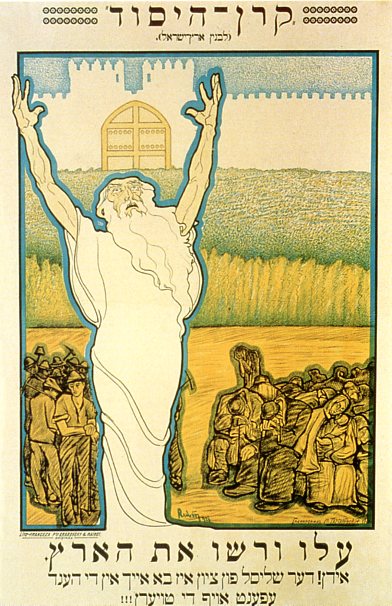
The Balfour Declaration of November 1917 greatly increased the Zionist movement in Romania. In every city and town in which there was a Jewish community, Zionist organizations were established - yet they operated without coordination between them and sometimes against one another. Students and high school pupils had their own organizations: the "Zionist Youth Union” and the "Hashmoneah Zionist Organization" that operated in cities with universities such as Bucharest and Iaşi.
The dominant ideological stream until 1930 was that of the General Zionists that acted as one unified political body. The first factions appeared at the same time, including a group of the "Revisionist" movement founded in 1925 after Ze'ev Jabotinsky's first visit to Romania, a group of the" Poalei Zion" founded in 1928, and the "Mizrachi"; a group of religious Zionists that operated within the in cities in Moldova.
The Zionist movement in Romania established a network of social institutions and organizations and made them available to members of the communities. The movement's activists engaged in education and training and established youth movements and student associations which conducted various activities, including studies on topics such as the history of the Jewish people, Hebrew and Jewish literature and the history of Zionism.
The pioneering youth organizations held an important position in the activities of the Zionist movement in Romania, including "Hashomer Hatzair", "Hanoar Hazioni", "Gordonia", "Hehalutz", "Beitar", "Bnei Akiva", "Dror" and "Habonim". The umbrella organization for the joint activities of all the youth movements in the Zionist Organization was the "Hehalutz", which also served as a center for the activities of emissaries to Eretz Israel, and was the authority on matters concerning Aliyah.
During the 1920s, "Hehalutz" farms were established, which began training members of the youth movements for their eventual immigration to Palestine. In the spring of 1925 three training centers were established in Moldova, and in the autumn of that same year a farm was built in Iasi. These centers operated alongside Jewish-owned farms, estates, and factories. Members of the youth groups in Romania participated in the establishment of dozens of kibbutzim and moshavim throughout Palestine.